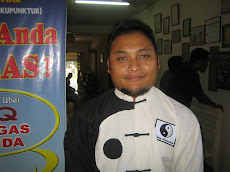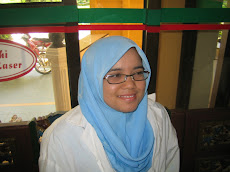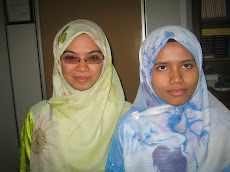History of the German Homeopathic Hospitals
(Original Title: Geschichte der deutschen homöopathischen Krankenhäuser By Heinz Eppenich)
Short review and isolated excerpts of this book
--By Siegfried Letzel
Introduction: As the focus of your hpathy eZine this month is homeopathic hospitals, I would like to use this opportunity to take you, dear reader, with me on a short study trip to the past; namely, to the beginnings of homeopathic hospitals, reaching far back to the early days of homeopathy. Today, only with an exceptional effort is it possible to collect, analyze, and evaluate the data and facts available about the early homeopathic hospitals and to compile them in such a fashion as to obtain an easily comprehensible, readable and compact layout.
It is Heinz Eppenich who made an attempt at such a project – and his efforts have been crowned with success: Geschichte der deutschen homöopathischen Krankenhäuser (History of the German Homeopathic Hospitals; ISBN 3-7760-1497-0; Karl F. Haug publishing house; Publisher: Institute for the History of Medicine (IGM). Language: German)
Leipzig
1832: The First Hospital in Leipzig
In November 3, 1832, Dr. Samuel Hahnemann published the following article in the "Leipziger Tagblatt" (Leipzig Daily Newspaper), which was intended to be a term of abuse towards the "half-homeopaths of Leipzig". First in line, this article was directed at the chairman of the Homeopathic Central Society, Moritz Müller, and at the bastard-homeopaths who prepared to emerge "as gravediggers of homeopathy". This curse of the ‘half-homeopaths’ caused the quarrel among the ‘pure’ and the ‘free’ homeopaths to escalate.
Consequently a deep divide arose in the midst of the eight-headed board of directors of the Central Society, who, as owner of the future homeopathic clinic in Leipzig, determined the director and the inspection of the institution. The Central Society developed from the "Society for the Promotion and Education of the Homeopathic Art of Healing" in 1829 for the project of a healing - and educational establishment in Leipzig. But with his self-assertive appearance to protect his art of healing from falsification (allopathization of homeopathy), Hahnemann sacrificed his long-awaited medicinal – and educational establishment for "genuine homeopathy".
Moritz Müller, not a pure homeopath, was appointed as the first establishment director of the clinic in Leipzig. Nevertheless, the repeated change at the top of the clinic influenced by power struggles still allowed for a development, so that Dr. Hahnemann gave a more positive opinion about the homeopathy practiced there in 1834 (probably under Dr. Schweickert). In June 1835, Hahnemann moved to Paris.
About the years until 1839 it is known that the therapeutic practice included also blood-letting, clysters and also physiotherapeutic measures. Homeopathic remedies usually were prescribed as 30 C and low potencies. Not infrequently, more than five (but also more than ten) remedies were applied, but the case records don’t show, whether simultaneously or successively.
It is said that the philosophy practiced in the clinic by Dr. Schweickert was that he allowed remedies, especially antipsorics, to act as long as possible and that he didn’t repeat them prematurely. Under earlier directors the practice existed, that a physician prescribed a remedy for a patient, and when the patient reappeared a few days later, he was prescribed another remedy by another physician, especially when there was no considerable improvement, because the second doctor also wanted to prescribe. If, at the third visit, the third physician examined the case, not infrequently, he would prescribe a third remedy, because, after all, this physician, too, wanted to prescribe. This practice led to squabbles amongst the physicians in- and outside of the clinic. Most probably Dr. Schweickert's philosophy had saved the hospital.
The recorded cases unfortunately are incomplete. The choice of potency and remedy and their substitution didn’t remain comprehensible and additionally, manipulations for cleansing, revulsion and excretion influenced the action of the homeopathic remedy. They even replaced the homeopathic remedy now and then.
Originally, it was planned to design the hospital for impecunious patients. However, very soon this could not anymore be kept up. Soon, the costs of the hospital had to be covered by the sick people (up to 30 – 40 %) and by donations from home and abroad. In 1842 the funds didn’t suffice anymore for the continuation of the institute. The first homeopathic hospital in Leipzig continued to exist as the outpatients’ clinic of Leipzig.
In 1888 the second homeopathic hospital in Leipzig opened from a better financial starting point. Unfortunately, the well paying private patients stayed away from the clinic to a great extent (inadequate comfort, inconvenient location and so on) and the costs covered by the compulsory medical insurance of Leipzig for most of the patients didn’t meet the expenditures. Therefore, in 1898 the situation got difficult. The Central Society had to subsidize more and more, finally, in 1901, the operation of the hospital had to be terminated.
What do we know about the homeopathic practice of this hospital? The director Stifft seemed to have striven much for "clinical symptoms" (probably clinical diagnoses). Consequently, the genuine homeopathy was given a farewell and the doors were opened for a so-called scientific-critical "homeopathy" with an orientation towards organo-pathological findings (diagnoses). Though, Stifft also was much interested in homeopathic indications on the basis of remedy provings.
Director Hans Wapler showed a scientific-critical dogmatism. Symptoms of remedy provings were emphasized no more, the clinical orientation was prominent. Treatments were allopathic for the most part. Even mixtures of homeopathic remedies are used. Wapler practiced the self-abolition of homeopathy through its "incorporation into the scientific overall medicine". Instead of leaving genuine homeopathy in a medical plurality, he split homeopathy into several ones, which finally dissolved into an institutional medicine, which exclusively referred to and relied on scientific medicine.
Berlin
In 1821, for some weeks, Ernst Stapf administered homeopathic therapies in the garrison military hospital and in the Charité in Berlin. Moritz Müller: "One third of the patients homeopathically treated were completely cured, a number of the patients improved considerably …"
In 1821, Wilhelm Eduard Wislicensus performed an experiment in the military hospital, in which the first of three different patients received homeopathic treatment, the second got allopathic treatment and the third one did not get any medication. The homeopathic method did best.
In 1904 the modern homeopathic hospital of the Wiesike Foundation opened with 48 beds, three operating rooms and a delivery room. Pre- and post-treatment of the patients were left to homeopathy. Apart from laboratory, microscopes and an x-ray apparatus it is possible to complete the treatment with light, air, dietetics, and physical therapy with gymnastic equipment. Although very soon the hospital operated profitably, it remained dependent on donations, because the completion of the fittings and equipment and the maintenance of the functional ability remained a problem.
To what extent the therapeutic practice in the clinic of Berlin deserved the label "homeopathy" in the Hahnemannian sense remains unclear because of too few casuistries (case records) sufficiently detailed. From the lectures of Schwarz, one can clearly suppose a scientific attitude with an organ specific orientation for the choice of remedies.
After the beginning of World War I, the hospital was changed into a Red Cross military hospital. Contentment prevailed about the good results of the applied method of inner homeopathic treatment together with the outside management of wounds. The costs of the military hospital finally could not anymore be covered by voluntary receipts – public allowances did not exist, and so the hospital ceased operation in 1917.
Munich
Probably the only one homeopathic hospital that survived World War I is the homeopathic cholera hospital in Munich. It opened in 1836. It emerged from the Society of Homeopathic Physicians, the administrative responsibility was taken over by Prince Karl of Oettingen and Wallenstein. The physicians Joseph Reubel and Franz Seraph Widnmann did correspond with Dr. Samuel Hahnemann. Dr. Johann Joseph Roth even visited Dr. Hahnemann, in 1831 in Köthen, in 1836 and 1842 in Paris.
From 1837 on, the hospital exclusively had to be financed by private funds. After the epidemic cholera had changed to a cholera sporadica, the hospital had to be closed for lack of the necessary funds.
In 1883, the "Homeopathic Hospital Munich" re-opened its gates as an institution that started on a firm financial base. During the first 14 months, 31 patients were taken in, 19 of them were discharged from hospital being cured, and 5 died. Between 1883 and 1903, the number of patients varied between 30 and 44 per year. In 1886, an outpatient’s department for penniless, poor persons was furnished. The number of dispensed medicines rose continuously up to 2,000 in the year 1901.
The hospital was also a charitable institution, in which also old and infirm, mostly poor people, who where not constantly sick, were nursed throughout the year. This was criticized, because as a result, sufficient beds were missing for curable patients.
The number of in hospital patients raised further up to 76 in the year 1908. In 1913, 114 patients were accepted in the new building, 84 of whom were discharged from hospital being cured, 4 died, 12 remained in the clinic.
Unfortunately again, clinical reports are missing by which one could understand something about the homeopathic treatment. It is known that isopathic trials were done with the nosode Tuberculinum (administered in the 10th, 30th and 100th potency – in few and very rare doses). Several times it was emphasized that the scientific rigour of homeopathy is based on the study of the specificity of the remedy, recognized through its symptoms on healthy people (provings).
Stuttgart
In 1866, Paul von Sick, surgeon, internist and homeopath, became head of the Deaconess House in Stuttgart. In spite of homeopathic treatment, the statistics of Stick show a high mortality ratio of 17.4 %. The main reason was, that mostly elderly persons were accepted who suffered from long-standing diseases and who already got treatment by various physicians with mostly different medicines. Such patients were seeking for a final sanctuary, some of them just wishing to die in peace.
Different from this was the municipal hospital in Schwäbisch Hall, which, according to its statutes, accepted business assistants, apprentices and servants: from 1851 to 1870 only 29 out of 3527 patients died (0.82 %). In no other similar clinic, a more favourable ratio could be detected. Sick subordinated his homeopathic method completely to science. But what remained the most important for Sick was the connection of the similarity based on the symptoms of the remedy provings.
As a rule, low potencies were used, but also 30 D. Mixing of remedies was rejected. Homeopathy was completed by employment of light, warmth, water, air, foodstuffs and the like. Still, Sick separated homeopathy and naturopathic treatment from each other.
In 1915, the industrial magnate Robert Bosch set up the "Homeopathic Hospital in Stuttgart plc" and united with the "Association Homeopathic Hospital Stuttgart" and the "Hahnemannia".
The new building of the hospital at first had to rest, because of the depreciation of the currency due to World War I. Therefore, not before 1940 it could be handed over with 300 beds. It was given the name "Robert Bosch Hospital" (RBH)
--> Further details about this hospital, will be in the book review of the Ezine for October '06, which is especially dedicated to the Robert Bosch Hospital.
Köthen
In 1823, Hahnemann complained about Köthen not owning a hospital at all. He needed it "because this knowledge cannot be transferred in writing – one has to hear it, to observe it and one has to see for oneself."
The successful setting up of a hospital was by Arthur Lutze, but only after the death of Dr. Hahnemann. The hospital was able to notch up much popularity and considerable financial profit.
Like Hahnemann, Lutze was attracted to Köthen by the liberal attitude to homeopathy by the Duke of Anhalt-Köthen. In 1846, Lutze attained great success by mesmerism (a healing method developed by Franz Anton Mesmer, learned from the mesmerist Julius Neuberth). Already before his work in the hospital in Köthen, he was equipped with "all of the remedies" in high potencies. In 1855, the hospital was opened. Köthen developed into a place of pilgrimage for those who required treatment.
The attempt to make sacred or "Saviourism" of the healing art reached a peak in homeopathic history. While Lutze extended his popularity even further, he was rejected by the representatives of the scientific orientation which prevailed in Germany, certainly for his high potencies, but mainly due to his self-proclaiming nature and his all too high-handed publication of the 6th edition of the Organon, in which he propagated the use of double remedies (while Hahnemann dissociated himself from the use of double remedies in 1833).
In 1864, 26,690 patients were given medical care in the outpatients’ clinic. 51,452 letters with 162,781 case reports were answered. More than ¾ of all patients were given free treatment. But the numbers tell nothing about real cures. The rational "handling" of the patients Lutze describes in his textbook of 1860. Lutze dispensed all of his remedies personally, only the mother tinctures he received from a pharmacy. His remedies were sent and held in high regard worldwide.
After Lutze’s death, the clinic continued to exist until World War I.
Conclusion: Today we are allowed to doubt whether the previous history of the German homeopathic hospitals just has been prehistory, offering some glow of the concrete utopian dream of future homeopathic hospitals. For the historian, Hahnemann’s ideas could not be clearly verified in any of the clinics under investigation here. From the beginning, the German history of homeopathy and its hospitals was in a dilemma. The contortion, distortion and watering down of the homeopathic practice and of the foundational homeopathic principles is found repeatedly.
Issues that were violently argued about from the time of the first homeopathic hospital in Leipzig, during Hahnemann’s life, and were not resolved, definitely found their place in the second homeopathic hospital in Leipzig as well. We observe this not only in the practical problems they faced, but – on the basis of its facts – also in the epistemological change, which had started almost a century before at the hospitals in Paris; this spread from there. For example, at those times, among the allopathic clinicians, and also among the homeopathic colleagues the change of focus from the symptom to the pathology had already taken place. With this, the principle of pure phenomenality was abandoned, pure Hahnemannian Homeopathy was ignored and the term "clinical homeopathy" was coined. Hahnemann’s wish that "his" homeopathy should be taught at the hospital bed which would contribute to the spread of homeopathy in hospitals, could not be realized.
Adopted: Wiht Courtesy From: HPathy
Monday, May 18, 2009
Subscribe to:
Post Comments (Atom)
















Hi I am looking for funding for a medical concept that will spread free healthcare to the villages as well as educate and train people to become barefeet doctors.
ReplyDeleteKindly assist.
email on lukemendes@gmail.com
Thank for this important information. It helps a lot to get rid of illness. your blog is well written and maintained. we also provide homeopathic treatment & treatment so please visit us:-http://naiminath.org
ReplyDelete